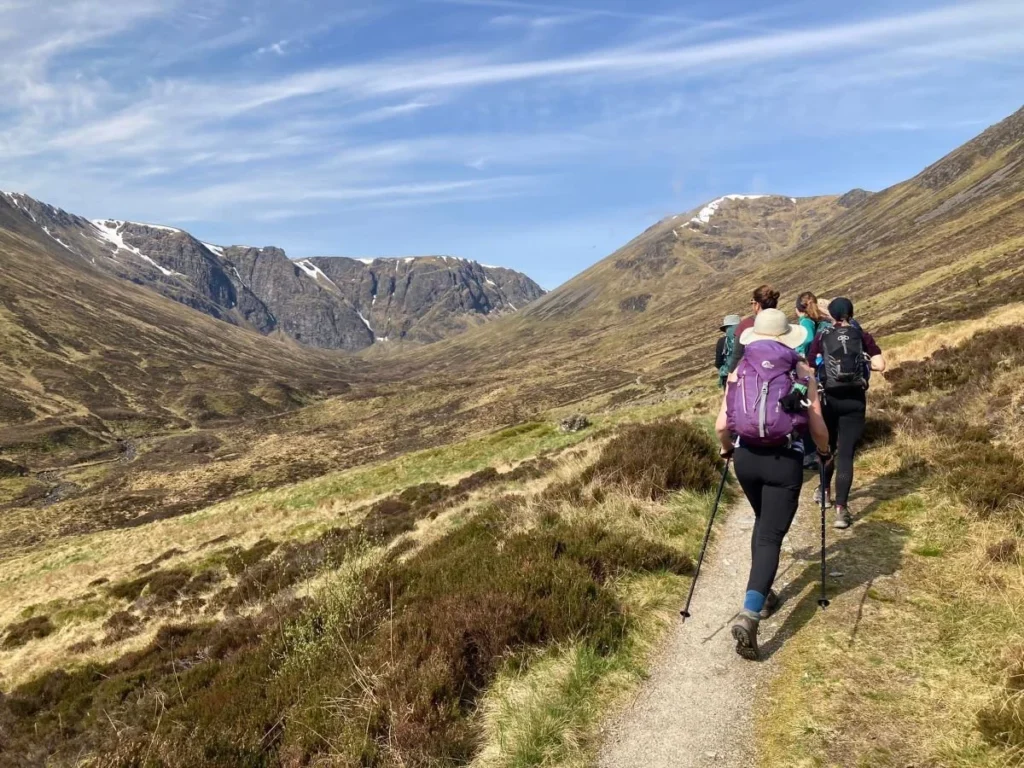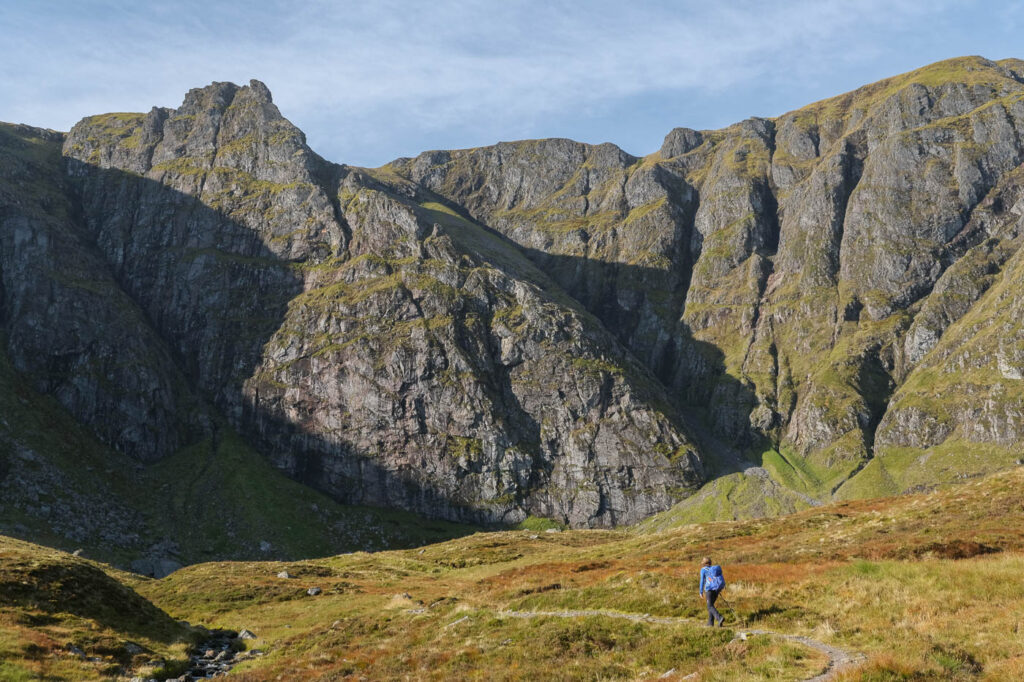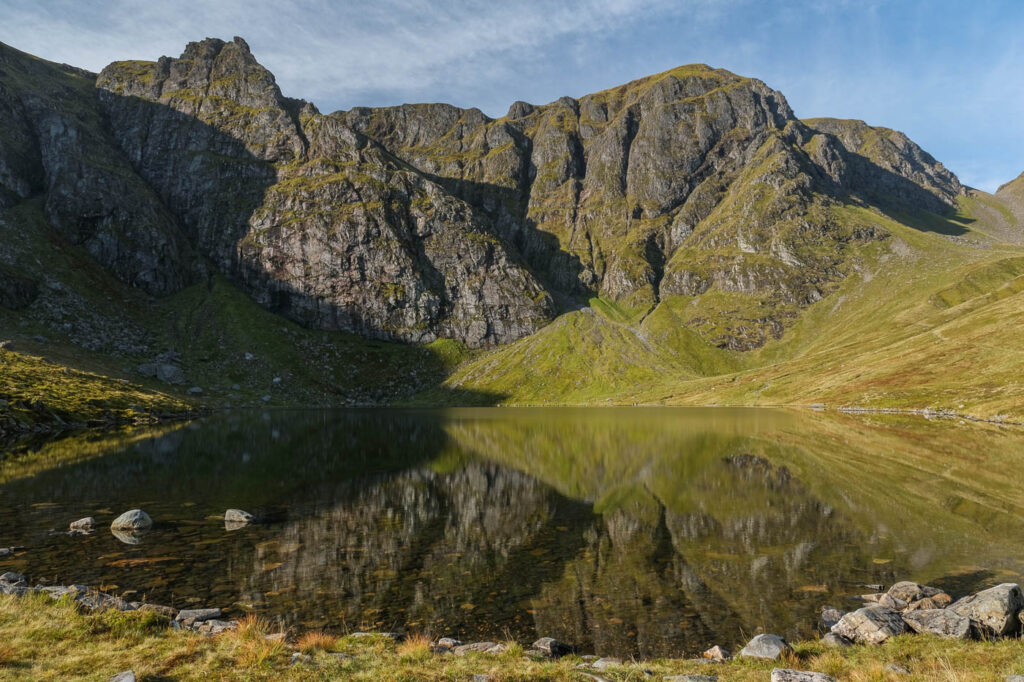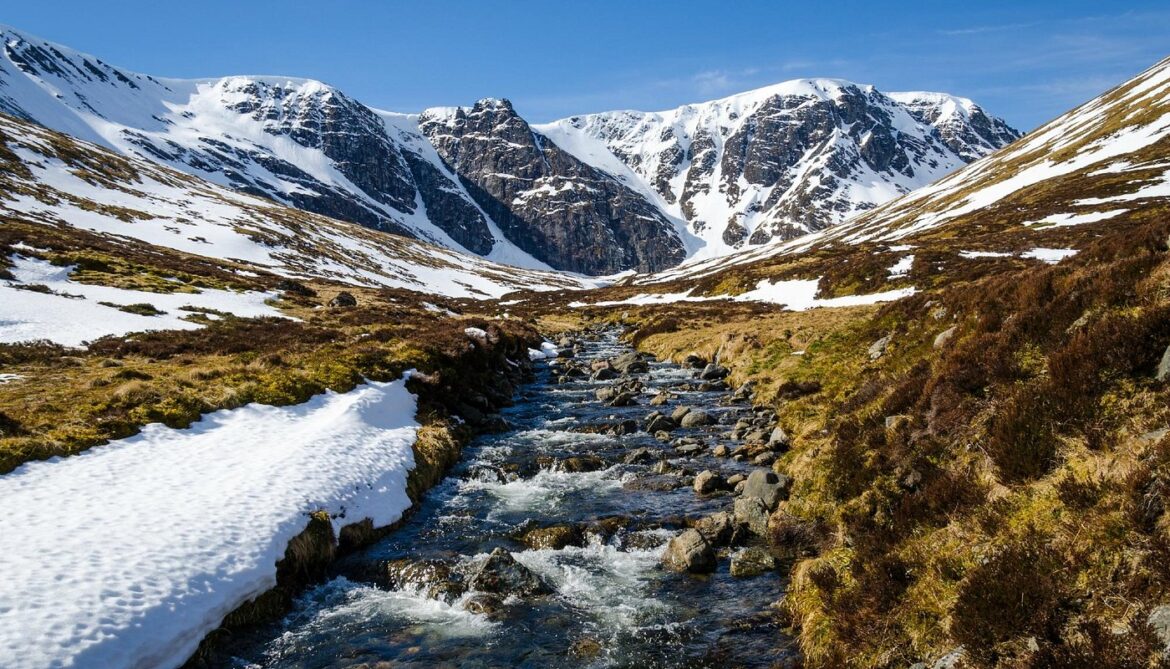Nestled in the rugged landscape of the Scottish Highlands, Creag Meagaidh National Nature Reserve is one of Scotland’s most celebrated wild spaces. Covering more than 4,000 hectares of mountain, moorland, and ancient woodland, the reserve is often described as a “miniature Highlands” because it contains such a variety of habitats within its boundaries. From the windswept plateau of Coire Ardair to the regenerating woodlands of the lower slopes, Creag Meagaidh offers an experience that is at once breathtakingly wild and deeply restorative.
It is not only a haven for wildlife and a showcase of Highland ecology but also a symbol of Scotland’s commitment to conservation. For walkers, birdwatchers, climbers, and anyone with a love of untamed nature, Creag Meagaidh is a destination of exceptional significance.

Location and Geography
Creag Meagaidh lies in the Lochaber region of the central Highlands, roughly halfway between Fort William and Aviemore, and close to the shores of Loch Laggan. Rising to a summit of 1,130 metres (3,710 feet), it is classified as a Munro and stands proudly in a massif of neighbouring peaks. Its name, from Gaelic, is often translated as “Crag of the Boggy Place,” an apt description given the mixture of sheer cliffs, rugged ridges, and wetlands that characterise the reserve.
The area is dominated by Coire Ardair, a dramatic corrie with towering cliffs that sweep down into Lochan a’ Choire, a small mountain lake that mirrors the surrounding peaks. This corrie is one of the most photographed natural features in the Highlands and a key destination for walkers and climbers.


Conservation and Restoration
Creag Meagaidh was declared a National Nature Reserve (NNR) in 1986, but its journey to becoming the flourishing landscape it is today has been remarkable. Prior to its designation, centuries of heavy grazing by sheep and red deer had left much of the hillside stripped of trees and vegetation. The land was degraded, with soil erosion threatening the delicate ecology of the area.
When conservationists from NatureScot (formerly Scottish Natural Heritage) took control, they implemented one of the most ambitious rewilding projects in the UK. Deer populations were reduced through careful management, and natural regeneration was encouraged. Over the decades, birch, rowan, willow, and Scots pine have returned, transforming the lower slopes into a patchwork of young woodland.
Today, Creag Meagaidh is held up as a model of ecological restoration. It demonstrates how damaged Highland landscapes can recover when human pressures are reduced, offering hope for broader rewilding efforts across Scotland.
Flora and Habitats
The variety of habitats within Creag Meagaidh makes it unique among Scotland’s reserves.
- Woodlands: Once almost lost, the regenerating birchwoods and pinewoods are now thriving, supporting insects, birds, and mammals. In spring and summer, the woodland floor is alive with wildflowers such as bluebells, wood sorrel, and violets.
- Heath and Moorland: Higher up, the slopes are dominated by heather, blaeberry, and mosses, providing food and shelter for grouse and other upland species.
- Alpine Plateau: The summit plateau is a tundra-like environment, harsh and exposed, where only the hardiest plants such as moss campion and alpine lady’s mantle can survive.
- Wetlands and Bogs: Peat bogs and wet flushes are important carbon sinks and home to rare plants like sundew, a carnivorous species that thrives in nutrient-poor soils.
This mosaic of habitats contributes to Creag Meagaidh’s reputation as an ecological jewel, where lowland, upland, and montane environments can all be experienced in a single day’s walk.
Wildlife
Creag Meagaidh is equally important for its wildlife. The reserve provides sanctuary for many species that have declined elsewhere in Britain.
- Birds of Prey: Golden eagles are regularly seen soaring above the cliffs, while peregrine falcons hunt in the corries. Buzzards, kestrels, and occasionally white-tailed sea eagles add to the spectacle.
- Songbirds: The regenerating woodland is a magnet for warblers, finches, and thrushes. In winter, flocks of redwings and fieldfares feed on the berries.
- Mammals: Red deer remain present but are carefully managed to prevent overgrazing. Roe deer, pine martens, and red squirrels also inhabit the area. Otters are sometimes seen in the waterways near Loch Laggan.
- Insects: The variety of wildflowers attracts butterflies such as pearl-bordered fritillaries, while dragonflies patrol the wetlands.
The combination of top predators, grazers, and smaller species makes Creag Meagaidh a dynamic ecosystem where natural processes are allowed to flourish.
Walking and Hiking
For walkers, Creag Meagaidh offers some of the most rewarding routes in the Highlands.
Coire Ardair Walk
The most popular trail leads from the reserve’s car park to Coire Ardair and Lochan a’ Choire. This 10-kilometre (6-mile) round trip follows a well-maintained path that winds through regenerating woodland before opening into the vast amphitheatre of cliffs. The view of the lochan with the towering crags behind is unforgettable, and for many visitors, this is the highlight of their trip.
Creag Meagaidh Munro Circuit
For more ambitious hikers, the full circuit of Creag Meagaidh and its neighbouring Munros is a classic mountain route. It includes Stob Poite Coire Ardair and Carn Liath, creating a horseshoe that takes in high ridges, sweeping views, and challenging terrain. The route is around 20 kilometres (12 miles) long and requires good fitness and experience in mountain navigation.
Winter Climbing
In winter, the cliffs of Coire Ardair become a magnet for ice climbers. Routes such as “The Pumpkin” and “The Wand” are famous among the climbing community, offering world-class icefalls and gullies. The conditions are demanding, but the rewards are immense.
Visitor Facilities
Creag Meagaidh is managed with a focus on both conservation and accessibility. At the reserve’s main entrance, near Aberarder Farm, there is a visitor car park and information centre. From here, trails are waymarked, providing options for both casual walkers and seasoned mountaineers.
Facilities are deliberately minimal to preserve the wild atmosphere. There are no cafés or shops on site, but information boards explain the ecology and history of the reserve. Fort William and Newtonmore, both within driving distance, offer accommodation, restaurants, and additional visitor services.
Cultural and Historical Significance
Creag Meagaidh is not only a natural treasure but also part of the cultural landscape of the Highlands. Its Gaelic name and heritage reflect centuries of human interaction with the land. The area was once used for shieling—the seasonal grazing of livestock in summer months—leaving traces of old stone shelters.
It also lies within the heart of the Gaelic-speaking Highlands, a region shaped by clan history, crofting, and the turbulence of the Jacobite uprisings. While today the reserve is managed for conservation, it remains connected to a living cultural heritage that values both people and landscape.
Challenges and Conservation Goals
Although Creag Meagaidh is a conservation success story, challenges remain. Climate change threatens to alter habitats, with rising temperatures affecting alpine plants and increasing the risk of extreme weather events. Maintaining a balance between public access and habitat protection is also vital, as growing visitor numbers can lead to erosion and disturbance of wildlife.
NatureScot continues to manage deer populations, restore peatlands, and monitor species, ensuring that the reserve remains a thriving ecosystem. Education and community involvement are also central, helping people understand and value the importance of wild places.
Why Creag Meagaidh Matters
Creag Meagaidh stands as a symbol of what can be achieved when nature is given space to recover. Once degraded by overgrazing, it is now a flourishing landscape where woodlands regenerate naturally, wildlife thrives, and people can connect with Scotland’s wilder side.
For visitors, it offers an experience of authenticity: a place where the Highlands are not just scenery but a living, breathing ecosystem. Walking into Coire Ardair, watching an eagle soar, or simply listening to the wind in the birches is to be immersed in a landscape that is both timeless and full of hope for the future.
Conclusion
The Creag Meagaidh National Nature Reserve is one of Scotland’s greatest natural assets, combining dramatic mountain scenery, ecological richness, and a powerful story of restoration. Whether you are drawn by the challenge of climbing its Munros, the beauty of Coire Ardair, or the chance to witness rewilding in action, Creag Meagaidh offers something unforgettable.
In many ways, it represents the Highlands at their best: wild yet welcoming, harsh yet beautiful, shaped by both natural forces and human history. It is a place where conservation and adventure go hand in hand—a reminder of the resilience of nature and the importance of protecting it for generations to come.

